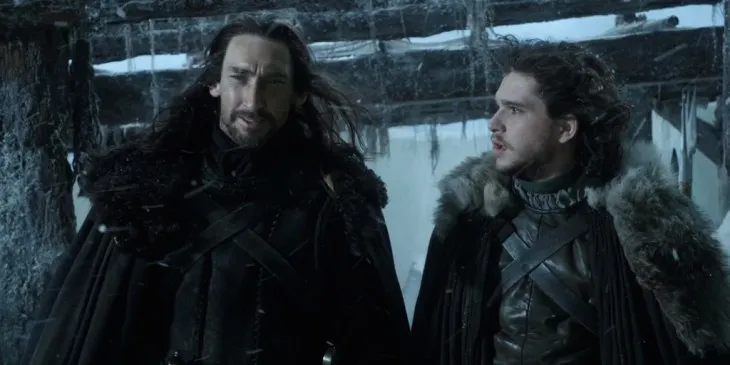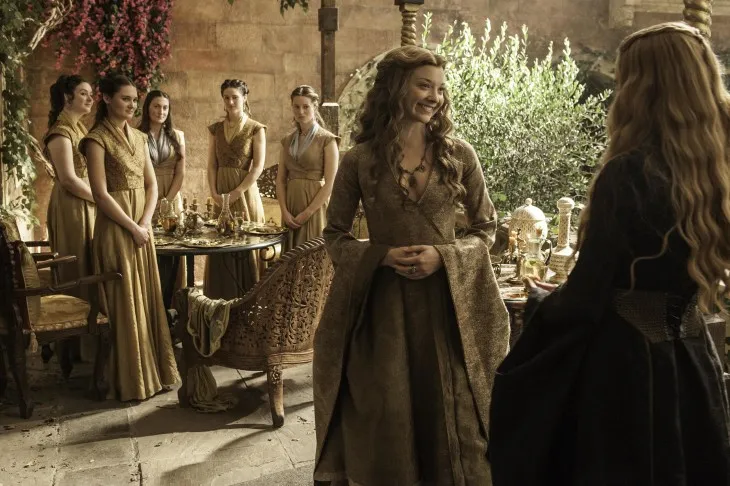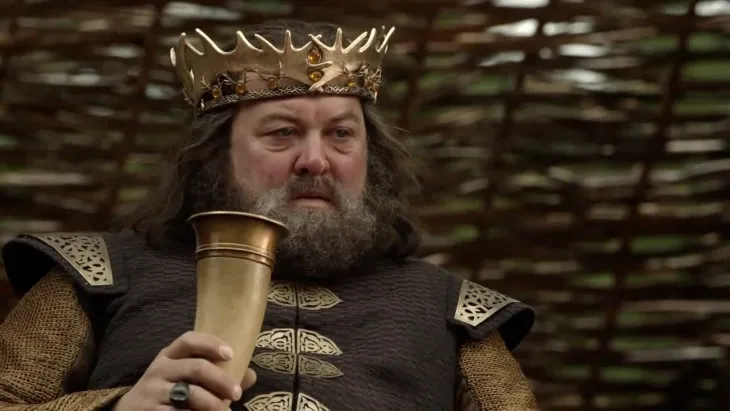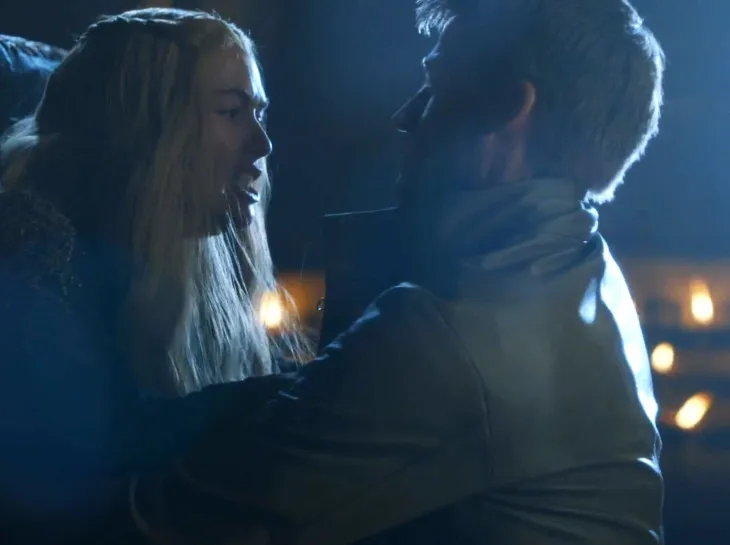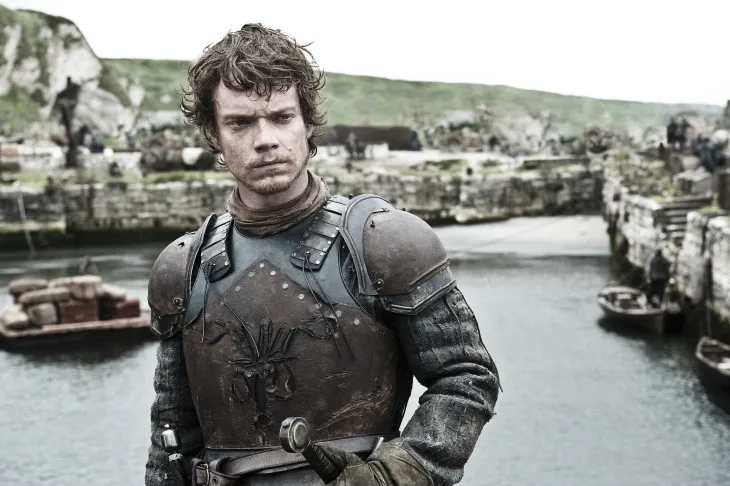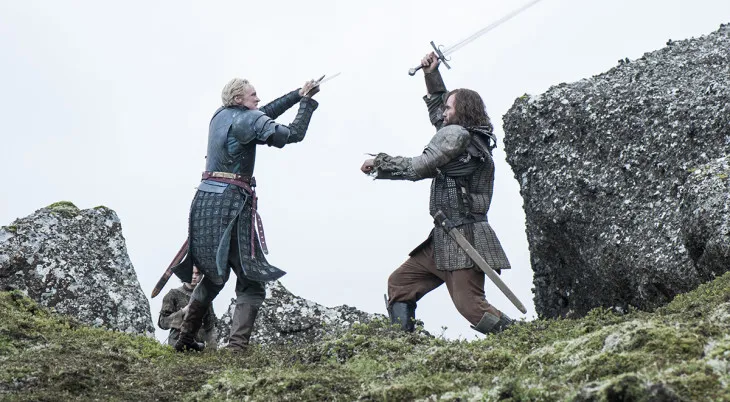The entire A Song of Ice and Fire property is in a really weird and seemingly unprecedented state right now. The epic fantasy series was originally written by author George R.R. Martin and adapted into the HBO series Game of Thrones in 2011, prior to the release of Martin’s fifth of seven planned novels. What’s happened though is that, as the show has steadily caught up to the books and eventually passed it with Season 7. As such, the differences between the two mediums continue to grow. That being said, there are a lot of Game of Thrones viewers who don’t read the books and may not be aware of just how much the show has diverged from the books. Here are 15 of the most significant changes between the two.
15. Coldhands
Season 1 of Game of Thrones feels like so long ago that it’s easy to forget about characters who only appeared in that season. One of the more prominent ones was Benjen Stark, Eddard’s younger brother and ranger of the Night’s Watch. Benjen goes missing early on and is never seen again. The same is true in the books, but there is also a mysterious figure called Coldhands who many believe is actually Benjen Stark. Coldhands is a wight who appears north of the Wall and helps Samwell Tarly and Bran Stark in their respective quests. For whatever reason, Coldhands has not appeared on the show, which is a shame considering he is supremely cool and rides a giant elk.
14. Margaery
Margaery Tyrell is an important character in the books, but she’s still largely a supporting player, as she does not have any point-of-view chapters. However, in the show, Margaery has become a major character who is much more involved in the political machinations of King’s Landing. As portrayed by actress Natalie Dormer, Margaery is depicted as a much more cunning, pragmatic woman who is not afraid to use her sexuality to achieve her goals — a departure from the more chaste Margaery of the books. There are not too many significant changes between the two versions of the character, but her increased presence, combined with Dormer’s performance, makes the show’s interpretation much better overall.
13. Robb’s Romance
The deceased King in the North was surprisingly absent from much of the action of the books and his role was significantly beefed up on the show. In the books, Robb married a woman named Jeyne Westerling, but on the show he marries Talisa Maegyr, who doesn’t appear in the books. Although they are different characters, this change wasn’t all that significant given that Jeyne didn’t have much of a role in the books. While the romance between Robb and Talisa quickly grew tiresome, its resolution was absolutely exhilarating, as Talisa and the couple’s unborn child were brutally murdered at the infamous Red Wedding. In contrast, Jeyne not only doesn’t attend the wedding, but doesn’t die either. Either way, Robb’s romances were doomed from the start, but the show’s handling of this subplot is much more engaging.
12. Joffrey Is So Much Worse
The popularity of Game of Thrones has had a significant impact on pop culture, including the introduction of one of the most memorably vile villains in recent memory, the sadistic King Joffrey. Joffrey was already a wretched creature in the books, but the show’s writers seem to have seized on the idea of making him as awful as possible, as his depravity was amplified significant in his translation to the screen. Perverse sexual fetishes involving prostitutes and crossbows, as well as his cruel order to have all of Robert Baratheon’s bastard children slain, including infants, are just a few of the invented tyrannies for the show’s version of King Joffrey. Fortunately, his substantially unsympathetic characterization made it all the more satisfying when he was eventually snuffed out at his own wedding.
11. Less Nuance, More Thrills
A Song of Ice and Fire is a long, complex story where plots are slowly introduced and revealed over a span of many pages. This is a storytelling style that works really well for novels, but it doesn’t translate to the screen as effectively, given the limited pool of episodes and time available. Therefore, Game of Thrones has had to be much more efficient, introducing and resolving conflicts at a much quicker pace. For instance, the central mystery of the first novel dealt with the fate of Jon Arryn and the parentage of King Robert’s children. In the show, this mystery was dealt with much quicker, robbing it of some of its significance and impact. However, streamlining the storytelling has also resulted in more frequent thrills, and an overall better paced show than if the writers had tried to stay 100% faithful to the books.
10. Character Ages
Game of Thrones had a dilemma when it came to casting its younger characters, as the starting ages for characters like the Stark children and Daenerys were almost too young to translate to the screen effectively. Therefore, the decision was made to increase the ages of the characters across the board, as it would have been off-putting to say the least to see a 13 year old sexually-active Dany, or 15 year old warriors/leaders in Robb Stark and Jon Snow. The other issue was that the young ages of these characters works on the page, as they only age as fast as the story needs them to. Young actors, on the other hand, are subject to the same laws of time and aging as the rest of us. Characters like Arya and Bran are already noticeably much older now than they were in season 1, but fortunately, the show’s passage of time is left much more ambiguous than in the books — for all we know, 5 years could have actually passed in the show’s universe, accounting for the noticeable puberty.
9. That Rape Scene
One of the best character arcs in both the show and books is Jaime’s progression from being a detestable villain to a likable, sympathetic antihero. Occasionally though, the show has stumbled in its characterization of Jaime, depicting him in ways that arguably contradict that progression. One of the most controversial scenes in the show involved Jaime forcibly having sexual intercourse with his sister/lover Cersei, to the point where it very much looked like rape. A similar encounter happens in the books, but it’s depicted as being a consensual moment between the pair. Martin gave an interesting explanation of why he thinks the scene was changed so dramatically, but it still doesn’t change the fact that this scene doesn’t achieve anything besides being detestable.
8. Jaime and Bronn’s Adventures
Fortunately, season 5 of Game of Thrones has seemingly made strides to return Jaime to viewers’ good graces, as his mission in Dorne with everyone’s favorite mercenary Bronn has been an enjoyable affair so far. That being said, it may come as a surprise to learn that this fantastic plot never takes place in any of Martin’s books. Instead of going to Dorne in an attempt to rescue his daughter Myrcella, Jaime is sent to Riverrun to help with taking the castle from remaining Stark and Tully supporters. Bronn, on the other hand, doesn’t do much in the books after Tyrion departs Kings Landing, other than becoming a Lord after winning a duel with a knight Cersei sent to kill him. Jaime and Bronn’s adventures in Dorne are a big departure from the books, but considering the way their stories have played out in the books so far, it definitely feels like a change made for the better.
7. Tyrion’s Journey
It might still be too early to write this off as a change completely, but so far, Tyrion’s journey in season 5 to find Daenerys has been very different from the text. In the books, Tyrion travels with a group of characters who have not yet been introduced on the show, including Aegon Targaryen, Dany’s long-thought dead nephew who is secretly being setup for his own claim to the Iron Throne. While these characters, particularly Aegon, may still appear at a later point in the show, Tyrion is now long past the point in the books where he encounters them, suggesting that they may have been cut from the show altogether.
6. The Greyjoy Dynasty
The most well-known member of the Greyjoy clan is Theon, a.k.a. the most pitiful man in Westeros. Theon’s home, the Iron Islands, was featured prominently in season 2, but has largely been ignored in favor of extended scenes of torture and misery for Theon. In the books — especially the most recent ones — the Greyjoy clan is given much more focus and development. These includes Theon’s uncle Victarion, sent on a mission to kidnap Daenerys Targaryen by his brother and King of the Iron Islands Euron Greyjoy. None of these family members have been introduced on the show yet, which is probably for the best, as the political subplots of the Iron Islands are rather dull.
5. Tywin and Arya
One of the major locations featured in season 2 was the decrepit castle of Harrenhal, where Arya found herself imprisoned there for most of the season. In the books, Arya becomes a servant for Roose Bolton after he seizes the castle from the Lannisters, long after Tywin Lannister was there. In the show, Tywin remains in Harrenhal a lot longer, effectively replacing Roose Bolton’s role. Arya becomes Tywin’s servant, which turns out to be a brilliant move on the part of the show’s writers, as it leads to some standout scenes between Maisie Williams and Charles Dance, the actors portraying them.
4. New Characters and Combinations
Game of Thrones has a giant cast of characters, which can make it difficult to remember the minor ones. Martin’s books make the show feel positively small in comparison, requiring the inclusion of a hefty glossary in the back of each novel to help make sense of the hundreds of characters that appear. Recognizing the impossible logistics of adapting every minor character to the screen, the show’s writers made the wise decision of excising most of the perfunctory players and where necessary, creating entirely new ones to perform the duties of multiple characters in the text. For instance, the comic relief character Strong Belwas was eliminated from Dany’s subplot because, while entertaining, he was extraneous and unimportant. Then there’s Ros, the tragically-fated prostitute from earlier seasons who was created for the show to basically have an excuse to spend more time with characters like Littlefinger, who doesn’t have as much of a role in the books. Creating and combining characters is nothing new for adaptations like Game of Thrones and really just leads to better storytelling.
3. Brienne and The Hound’s Fight
Season 4 ended in pretty spectacular fashion by having Brienne of Tarth and Sandor “The Hound” Clegane engage in a brutal fight. It’s an exciting scene, made all the better by the fact that Brienne beats the Hound, but it never comes close to happening in the books. Not only do Brienne and the Hound not fight each other, they never even meet! Like in the books, The Hound is left for dead by Arya , but he receives his wounds from an earlier encounter with a group of his monstrous brother Gregor’s men. Brienne, meanwhile, never finds Arya or the Hound, and instead has her own conflict with the brotherhood without banners (who have been conspicuously absent from the show since season 3).
2. Lady Stoneheart
One of the most significant changes in the show has been the omission of Lady Stoneheart, the name given to the resurrected Catelyn Stark. In the books, Lady Stoneheart becomes the vengeful commander of the brotherhood without banners, out to punish those she deems responsible for the murder of her son Robb. Currently, the show has chosen not to adapt this part of the character, as Catelyn has not been seen since her tragic death at the Red Wedding. The consensus seems to be that the show doesn’t have the time to do the character justice, so leaving her dead is the preferable alternative, but this is poor consolation for many fans that wanted to see Lady Stoneheart’s exciting subplot adapted to the screen.
 Screenshot via HBO
Screenshot via HBO1. Sansa Doesn’t Go To Winterfell
One of the best improvements the show has made to Martin’s characters is making Sansa much more engaging and dynamic. In the books, the elder Stark daughter never really progresses beyond being a whiny (albeit still sympathetic) victim. The show has made great strides to remedy this dull characterization by having Sansa be more proactive. Going one step further, season 5 has arguably given Sansa the most interesting storyline, by having her return to Winterfell, where she’s betrothed to Ramsay Bolton. Some viewers might not realize that this is a major departure from the books, as Sansa never makes it to Winterfell. Instead, a book-only character named Jeyne Pool is promised to Ramsay, disguised as Sansa’s sister Arya. The show’s version of this plot is much more interesting, as the stakes are raised considerably by putting Sansa in legitimate danger,which improves her characterization in the process.
